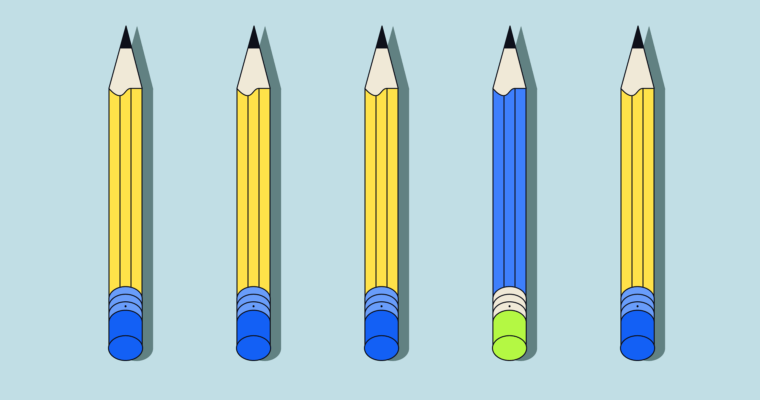
You’ve encountered creative nonfiction countless times—in conversation, on social media, and on the written page, but could you define or explain it if asked? Here, we’ll look at the kinds of writing and speech that make stories, podcasts, and countless other media come to life, all while sticking to the truth.
What is creative nonfiction?
Creative nonfiction is a genre of writing that combines factual accounts found in nonfiction with literary techniques found in fiction and poetry. In other words, it’s a true story with a touch of literary flair. Certain genres of nonfiction are often written as creative nonfiction, such as memoir, personal essays, literary journalism, and travel and food writing. An effective creative nonfiction story both informs and entertains its readers.
4 elements of creative nonfiction
The key difference between traditional nonfiction and creative nonfiction is the use of literary devices and techniques. While the characters and events in a work of creative nonfiction should be factually accurate, they are presented in a way that is purposely engaging to the reader.
Some elements that you’ll find in creative nonfiction include:
1 Scene setting
Writers focus on the tangible details about a time and place to immerse their readers in a scene. This can be achieved through literary devices such as imagery, simile, and metaphor.
2 Character development
Real people are fleshed out with backstories, mannerisms, and motivations, just like in real life. Some literary techniques that you might find in creative nonfiction are flashbacks, direct characterization, and dialogue.
3 Narrative
Much like novels, creative nonfiction stories have a beginning, middle, climax, and end. The order in which these events unfold is the story’s narrative. By using different narrative structures, the writer can control the pace at which events unfold and draw the reader further into the story.
4 Subjectivity
In traditional nonfiction, the writer keeps a distance from the subject. But in creative nonfiction, the writer’s perspective, emotions, and insights can be part of the story. This is particularly true of personal essays, which are often written from a first-person point of view.
In terms of structure, creative nonfiction borrows elements from fiction such as chapters, acts, nonlinear timelines, and pacing. In creative nonfiction, writers shape events into stories, in a way that flows naturally and keeps readers engaged from start to finish. But facts are still primary.
Forms of creative nonfiction
Common forms of creative nonfiction include memoir, personal essays, literary journalism, travel writing, food writing, and more.
Memoir
A memoir is a type of creative nonfiction in which the author writes about past experiences and events from their own life. Memoirs are typically longer narratives that involve extensive reflection, character development, dialogue, scene descriptions, and other literary techniques to share the author’s memories and insights. The goal is to craft an accurate but engaging life story.
Personal essay
The personal essay is a short prose composition in which the author explores a specific topic, experience, or idea from their personal point of view. Personal essays use literary tools like descriptive language, humor, and philosophical musings to share thoughts and reflections with readers. Events and topics are drawn from the author’s life and can range from the absurd to the mundane and everyday.
Literary journalism
Also known as narrative journalism, literary journalism combines factual reporting and research with vivid scenic descriptions, character profiles, dramatic pacing, and rich sensory details. In traditional journalism, there is a structure known as “the inverted pyramid,” which describes the way journalists place the most important information at the beginning of the story, and then work their way down through the details until they reach a pointed conclusion. Literary journalism allows the journalist to abandon this structure to tell the story in the way they think will be most compelling to readers.
Other forms
Some other forms of creative nonfiction are travel writing, food writing, and oral histories. Sometimes these genres overlap, like in Elizabeth Gilbert’s Eat, Pray, Love (travel writing and memoir) or My Life in France by Julia Child (food writing, travel writing, and memoir).
Nonfiction and fiction vs. creative nonfiction
Most of the time, the difference between fiction and nonfiction is straightforward. True stories are nonfiction; invented stories are fiction. Once in a while, you’ll come across a piece of writing that reads like fiction but is based in fact. You’ve found a piece of creative nonfiction. So what is the difference between fiction, nonfiction, and creative nonfiction?
Nonfiction simply aims to convey factual information or arguments in a clear, straightforward way. It generally lacks extensive descriptive language, character development, or narrative elements. Examples of straightforward nonfiction are scientific research papers, police reports, textbooks, traditional journalism articles, and some biographies.
Fiction invents characters, settings, and plots that are ultimately products of imagination. The author is free to alter events and outcomes to serve the story. Fiction may be inspired by true events, but if any part of the story is untrue, altered, or unverifiable, then the story is considered fiction.
Creative nonfiction lives in between these two genres, merging factual accuracy with literary flair. Nothing is made up, but the use of literary elements might make the story read more like a mystery, drama, comedy, or other genre of fiction.
Creative nonfiction examples
Eat, Pray, Love by Elizabeth Gilbert
This memoir chronicles a year that the author, Elizabeth Gilbert, spent traveling the world after a difficult divorce. She uses a three-part narrative structure based on the three different countries she visited that year. Though the events and characters are rooted in her experiences, her use of nontraditional narrative structure, flashbacks, imagery, and first-person point of view make it a work of creative nonfiction.
The Orchid Thief by Susan Orlean
The Orchid Thief is a work of literary journalism that threads together three distinct storylines.
Orlean uses extensive research, interviews, character studies, and her own experiences to generate the nonfiction material. She then breaks the story into three distinct threads and braids them together, using a nontraditional narrative structure and pacing adopted from dramatic fiction.
Irons in the Fire by John McPhee
To report Irons in the Fire, John McPhee traveled with a cattle brand inspector through rural Nevada, researching and taking notes on every interaction and conversation he had along the way. His long-form article is full of rich character dialogue, descriptive scene setting, and even elements of suspense and mystery as McPhee relays story after story of cattle disputes in the Wild West.
In Cold Blood by Truman Capote
Truman Capote’s famous work of creative nonfiction, “In Cold Blood” tells the true story of the murder of a Kansas farm family. Rather than simply presenting the facts gathered through police reports and interviews, as a traditional journalist might, Capote shifts perspectives and uses flashbacks to build up the lives of his subjects.
They Can’t Kill Us Until They Kill Us by Hanif Abdurraqib
In an essay titled “It Rained in Ohio on the Night Allen Iverson Hit Michael Jordan With a Crossover,” Hanif Abdurraqib recounts in granular detail a three-second play during a basketball game. The play did actually happen, but the insights he gleans and the language he uses splinter away from a straightforward play-by-play.
Creative nonfiction FAQs
What is creative nonfiction?
Creative nonfiction is a genre of fact-based writing that uses literary techniques to tell true stories in a compelling way.
How is nonfiction different from creative nonfiction?
Regular nonfiction focuses on just conveying facts and information without much literary flair, while creative nonfiction uses storytelling devices to engage readers.
What are the different kinds of creative nonfiction?
Some common forms of creative nonfiction include memoirs, personal essays, literary journalism, travel writing, food writing, and humor writing.






